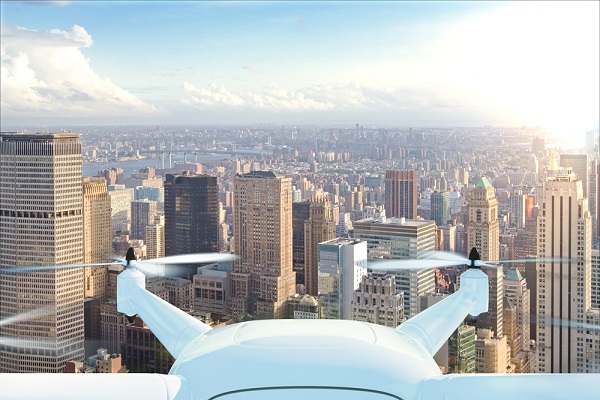The Commercial Drone Insurance Market Is Almost Ready for Take Off

By: Will Jones
Regulations for the use of commercial drones in the U.S. are restrictive. Despite that, commercial drones are in use within industries such as agriculture, real estate, photography and more. However, in recent years, there have been signs that the market is almost ready to open up—and the insurance industry has been preparing.
Last year, the Federal Aviation Authority (FAA) proposed a Remote Identification rule, which would provide a framework for remote identification of all unmanned aircraft systems operating in U.S. airspace. The rule would facilitate the collection and storage of certain data such as identity, location, and altitude regarding an unmanned aircraft and its control station.
An additional example of how regulation can unlock the potential behind the commercial drone market pertains to aircraft that fly beyond the visual line of sight (BVLOS) of its operator. An analysis by the Association for Unmanned Vehicle Systems International (AUVSI) found that just 10% of the unmanned aircraft systems included in the Unmanned Systems and Robotics Database possess the required waiver, seldom granted by the FAA, to operate an unmanned aircraft system BVLOS.
But if pending legislation passes, it could open a whole new dimension to the national economy and the insurance industry. “The real opportunity for insurance professionals will be on the commercial side of this business, which I think is about to open up a bit,” says Jon Downey, agency president, Assured Partners—Aerospace.
“Once the FAA figures out the proper way to integrate these aircraft into the airspace safely there’ll be an absolute explosion in the growth of commercial drones,” he says. “It’s very similar to commercial aviation in the 1930s.”
Even with legislators yet to give the green light to drones in a variety of industries, both the insurance market and the economy appear to be preparing and positioning itself for more opportunity in the future. There are nearly 1.3 million registered drones in the U.S. and more than 116,000 registered drone operators, according to the FAA.
Additionally, due to the number of “dirty, dangerous and dull missions that are done by manned aircraft that can potentially be done much more efficiently, safely and cheaper with drones, it could really take off,” Downey adds.
On the insurance side of the equation, the majority of the carriers that participate in the aviation market have “stuck their toe into the water with drones,” Downey continues, but he has witnessed more interest from underwriters who appear to be “jumping in.”
However, underwriting and rating in the drone market is tricky because “there just isn’t the data out there for underwriters to develop an adequate rating matrix,” Downey says. “And one of the other difficulties is the throwaway nature of these aircraft, having no FAA certification process and no repair protocols.” Prices are “nothing more than market-driven; they’re getting what they can, where they can,” he adds.
Additionally, as coverage needs and gaps develop, online options, quick, hassle-free binding and even new apps have begun emerging, meaning that when the time comes, coverage is available if permitted by state or federal law.
“Agents should also be aware of the online coverages and risk assessment apps that provide a variety of coverage period options that might be best suited for a client that is considering using an unmanned aerial vehicle (UAV) for a short term project,” says Jeffrey Ellis, Clyde & Co, an insurance law firm based in New York. “Until the issue of whether federal law exclusively regulates drone flight is finally resolved, it is equally important to determine what the local UAV laws are in the areas where the operation is likely to take place since many municipalities have enacted local laws prohibiting many types of UAV operations,” he adds.
The buying experience for drone insurance is even being forced to shift in the same direction that is being demanded in more mainstream property-casualty markets.“Pilots want day-to-day solutions without going through a long process, while carriers and brokers want to handle these cases with less paperwork and low-touch filing,” says Ilan Yusim, marketing director, SkyWatch.AI, which has built both a direct-to-pilot product and a white-label broker portal allowing full self-service with policy binding, billing and management with just a few clicks.
“Pilots now have a lot of choice and, as they are already using InsurTech solutions to manage their drone insurance, they expect a seamless experience and flexibility,” Yusim adds.
Will Jones is IA managing editor.
For more resources, watch the Big “I” Virtual University (VU) webinar, “4 Key Personal & Commercial Lines Exposures Every Agent Must Understand,”or read the VU article, “Did You Get a Drone for Christmas?”










